Keywords for SEO
Andy Woolley
Keywords
Google Trends
Google Search Console(GSC)
Google Analytics(GA)
What are Keywords
Keywords never die; they are the very cornerstone of how we communicate.
EEAT – Expertise | Experience | Authority | Trustworthiness
- An expert in their chosen field
- A recognized authority within their niche, industry or profession
- Worthy of being trusted by external reviewers, influencers, peers, and clients

- rich snippets
- featured rich snippets with images
- knowledge graphs
- map pack
- organic listings
- images
- news items
- videos
Understanding Keywords
Attributes associated with keywords:
- type
- length
- search volume
- keyword difficulty
Types of keywords:
- market segment keywords
- customer defining keywords
- product keywords
- branded keywords
- competitor keywords
- geo-targeted keywords
Market segment keywords
generic keywords
ex: running shoes
Customer defining keywords
that identify a specific subset of customers or audience
ex: running shoes for women
Product keywords
related to specific brand offerings and directly reference a company’s products or services.
You should have a keyword strategy per product or service so that customers and prospects can find the offerings through the means of search.
ex: Nike Air Max 270
Branded keywords
includes a brand name or other branded terms
ex: Nike running shoes
Competitor keywords
You should always research your competitor keywords as you can identify opportunities that will attract a similar audience of interested potential buyers.
ex: Adidas running shoes
Geo-targeted keywords
that identify a location.
ex: LA stores selling running shoes
Head Keywords: a popular keyword that drives high search volume. Head terms are very competitive when it comes to ranking, and they are opposite of long-tail keywords.
Body Keywords: 2~3 word phrases that get decent search volume (at least 2,000 searches per month) but are more specific than Head Keywords.
Long-tail Keywords: are more specific and usually longer than more commonly searched for keywords. Long-tail keywords get less search traffic, but will usually have a higher conversion value as they are more specific.
You can find Long-tail Keywords in the “People also ask” section of a Google search.
Keyword Relationships
BERT – Bidirectional Encoder Representations from Transformers: A machine learning algorithm that reads right to left and left to right.
LSI – Latent Semantics Indexing: method of finding (latent) relationships between words (semantics) in order to improve information understanding (indexing).
Preparation is Key
Statistical confidence:
- validity
- sample size
- usefulness

Plan the right content with the right keywords to meet the right intention.
Keyword intent:
- commercial
- informational
- transactional
- navigational
Commercial or High Intent
ex: purchase it here | “buy now” intent
People are most likely to commit to purchase as a result of these types of searches.
Search phrases can contain:
- Buy(online)
- Coupon(code)
- Deals
- Free Shipping
Informational Intent
ex: best selling cars of all time.
Informational intent can rank higher than other intent articles due to the fact that you are not being ‘pushy’ towards a sale. It is also regarded as ‘gated content’ as it leads towards transactional intent.
Search phrases:
- How to…
- Why…
- Best way to…
- History of…
- Anatomy of…
- What… means
- When do I… ?
- Where is… ?
Transactional Intent
ex: best car deals in your area
Lies somewhere in the middle of commercial and informational intent.
Transactional articles nearly always contain long-tail keywords and are far more specific in their intent.
Also referred to as ‘do’ keywords.
Search phrases:
- … reviews
- … VS …
- Best …
- Top 10 …
Navigational Intent
Also referred to as ‘go’ keywords, when users want to visit a website for a specific brand.
ex: Toyota SUV hybrid
TF-IDF: Term Frequency-Inverse Document Frequency
A calculation of how important a keyword is in relation to the document and is used by search engines in scoring and ranking a document’s relevance given a query.
Finding Keywords
4 steps for best manual keyword search via Google search:
- Type into the search box within your search engine your most obvious keyword term that describes what you do or provide within your brand. As you type, you will see a selection of organic keyword results displayed that will suggest pre-population within the search query box. These variations will be repeated at the bottom of the first page and constitute a range of possibilities relevant to your offering.
- Click on any of the variations mentioned in the first step, and these will begin to open up the possibilities of your content clusters. Some will be relevant, and some will not. This will depend on what you do and don’t do within your brand.
- Within the first page of results if you scroll down you will most likely find four accordions listed under a section called ‘people also ask’ which is a selection of the most popular organic questions being asked with the search query box over a period of time. Again, by clicking these they will open up variations to each question and offer more insight into whether something is relevant to you or not.
- As you continue clicking through the variations, you will discover new keywords and phrases that will open up possibilities to the way that your reader understands your market.
Do a detailed gap analysis of your competitors to identify where the gap is in the market for you to succeed.
The most popular terms are usually recorded by Google AdWords recorded with their appropriate search volume and competition to denote the keyword difficulty.
Make use of hashtags to consider social media trends.

Keyword Placement
Areas where your keywords can be seen:
SERPs
(Search Engine Results Page) which is the results page displayed back to you from the search engine and showing the most relevant content that connects with your query. Keywords here will be found in the title tag, URL, meta description, site link and some of the following placeholders mentioned below.
Featured snippets
are short snippets of text that appear at the top of Google’s search results in order to quickly answer a search reader’s query. This is normally in the form of a question and can be answered easily with the featured snippet. It is sometimes referred to as position zero and commonly includes definitions, tables, how-to steps, and lists.
Rich snippets
are your normal piece of information displayed as a SERP (title tag, meta description and URL), but with something more added, such as reviews, an emoji, a price for a product, an event date, or an image alongside it which is the case with news and recipes.
Knowledge graphs
are usually a collection of interlined entities such as diagrams, events, and concepts. Knowledge graphs are normally on the right of the search query and put data in context via linking and semantic metadata and this way provide a framework for data integration, unification, analytics and sharing.
Related search queries
are found at the bottom of each search query page within the search engine and provide more context to the original search query. Normally a maximum of eight variations are provided.
GMB listings
are found on the right-hand side of the search query results page after a search query for a brand or business name has been performed. It normally lists all the details to the brand including its name, address, phone number, reviews, opening hours and much more besides.
Site links
are listed under your SERP description for your chosen brand. It normally incorporates your most popular and relevant pages. It is also known as SERP features and contains the domain URL and a brief description. Normally displayed in two columns under your main SERP listing.
Map pack
is a selection of three of the most relevant businesses closest to what you have searched for and nearest to your location. Displayed with a Google map above, the chosen three include the company name, reviews, category, address, and link to your website (if you have one).
Twitter packs
pop up from time to time as part of an agreement between Google and Twitter to display trending and recent tweets from a company or a person with clickable links and images. Twitter packs show how a particular company, or a person are active on Twitter and prove additional information to the SERP.
Videos
can sometimes be the most relevant form of content to answer the search query and contain that valuable keyword. How-to guides are the most obvious way of connecting with the relevant material. Video results usually come with a large thumbnail, an eye-catching title, the description, upload date, a link, and the duration.
Top stories
display the most trending news search queries for a topic. They usually come from trustworthy magazines and newspapers such as CNN or the BBC. The block shows the top three stories on the SERP.
Images
are displayed in different ways on Google. An image pack is a horizontal column of high-rated results from Google images with a link that will take you to a Google Images search. They usually appear among other organic search results once Google defines these images as relevant to the query, especially if you have embedded the keyword within the alt tag to describe the image.
Shopping results
are similar to an Image Pack, Shopping results include a horizontal section of products that directly provide searches with prices, a thumbnail image, a link to the product, special offers and review ratings. These results are usually placed at the top, either in the right or in the left column.
Keywords should be included in the:
- title tags
- headings
- subheadings(H1, H2)
- meta tags
- meta description
- alt tags
- URLs
- Slugs
- body copy
- anchor text
- internal links
- categories and tags
- navigation
- footer
- reviews
Ideally each page should contain at least one link to a different page on the site and this link should reinforce the primary keyword of the destination page.
Text links are better for SEO than image-based links.
Analysis of your Progression
“You can’t manage what you do not measure.” – Peter Drucker

Without linking your website to both Google Search Console and Google Analytics, you will not be able to visualize and analyze the organic keywords of your website.
Setting both of the fundamental assets up is free, easy, and mandatory.
You need to compile a report containing the progress that has been made to date and itemize recommendations in order to convey to others.
Standard practice within the industry is to provide the necessary reporting to a client each month to ensure both a return on investment is achieved, and best practice is being employed so it all adds up to value for money.

About
We share our thoughts, ideas, and projects for all to learn and grow as we embark own our venture to gain FFF.
Contact
- official@finfreefirst.com
- Financial Freedom First
